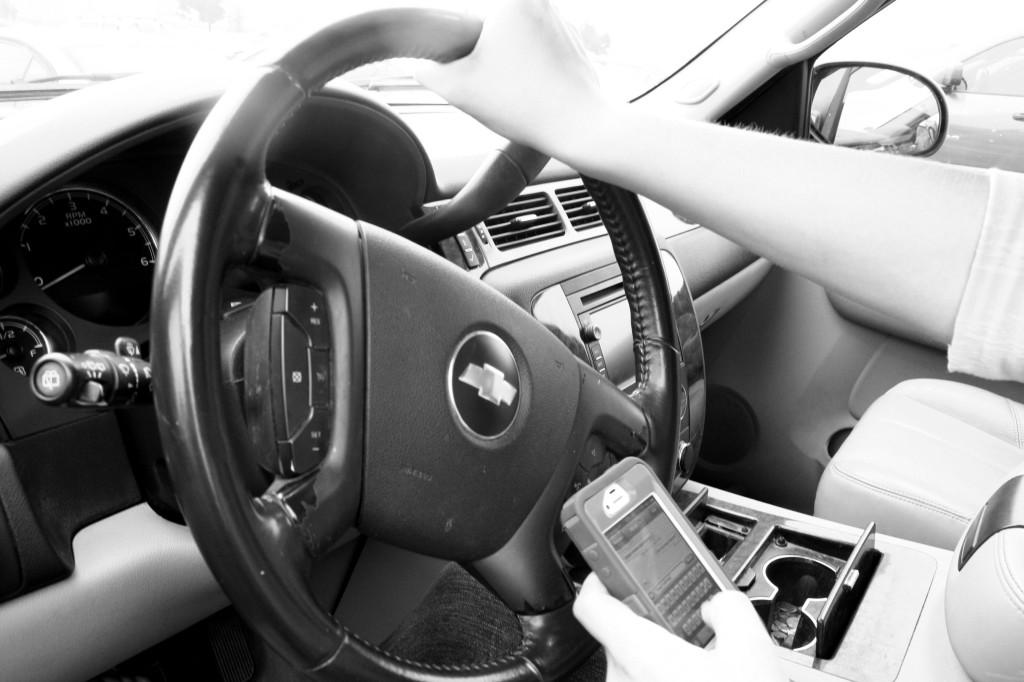R U Driving?
Katy Perry’s latest song blares on the stereo, Facebook is sending notifications, Mom is calling, and a friend is texting about her boy troubles. This scene may be common for many teens behind the wheel. How they respond to the chaos varies in most cases.
In the 21st century, distractions are all around us. Whether it is a cell phone, a loud radio or a friend in the passenger’s seat; driving is a common place where distractions can take a deadly turn. According to the National Highway Traffic Safety Administration (NHTSA), 3,092 people were killed in distracted driving accidents in 2010 and 10 percent of those involved teens aged 15 to 19.
GEHS has created an initiative to keep the school informed of the hazards presented behind the wheel, called Blazers Against Distracted Driving (BADD).
BADD was started after a series of tragic accidents in the Gardner Edgerton school district. Their goal, according to senior Alex Bangert, is to limit distracted driving throughout the community and make students aware of the dangers it causes. Through the use of assemblies, awareness months and petitions they are making the school more aware of what distracted driving can cause.
“The best way to make others aware is to set an example,” Bangert said. “Don’t text and drive when you are in the car and make sure your friends aren’t as well.”
BADD is beginning a campaign to warn of the dangers of distracted driving. Junior Ali Haag, a member of BADD, said they plan to create a pledge for students to sign. They will also be involved in an online contest that could win money for our school.
“We try to get the message out through big signs and the announcements,” Haag said. “We want people to know about the dangers.”
In Kansas, the laws are clear on distracted driving. According to the NHTSA, all forms of cell phone use, hand-held or hands-free, are illegal for drivers under the age of 18, and texting is illegal for drivers at any age in the state of Kansas. This law applies in various forms throughout the United States. Through a survey of 75 juniors and seniors in our school, it was found that about 73 percent of those surveyed choose to not text while driving and are aware of the dangers it can bring. However, 27 percent of students admitted to being distracted behind the wheel and although the reasons varied, 90 percent of those who admitted to distracted driving said it was to inform friends of where they were or to talk to their parents.
Another key to staying safe while in the car is seatbelt use. Haag explained that without seatbelts, it is much easier to be thrown from the car and suffer life-threatening injuries in the event of an accident. All but four of the students surveyed said they wear a seatbelt. In 2011 alone, the NHTSA found that 11,949 lives were saved by the use of seatbelts. Had there been 100 percent use of seatbelts, an additional 3,384 lives would have been saved.
Although not always deadly, texting and driving brings many dangers that can easily be avoided, according to Bangert.
“Turn off your phone or simply place it in the back seat on silent,” Haag said. “It will keep you from being tempted and could save your life.”
Through the use of seatbelts and common driving precautions, lives could be saved. The Insurance Institute for Highway Safety said that those who text while driving are four times more likely to be involved in serious accidents that could cause injuries. While it may seem tempting, it can wait. One text message is not worth the potential consequences. Next time, think before pulling out a phone or forgetting your seatbelt, and remember what could happen.















